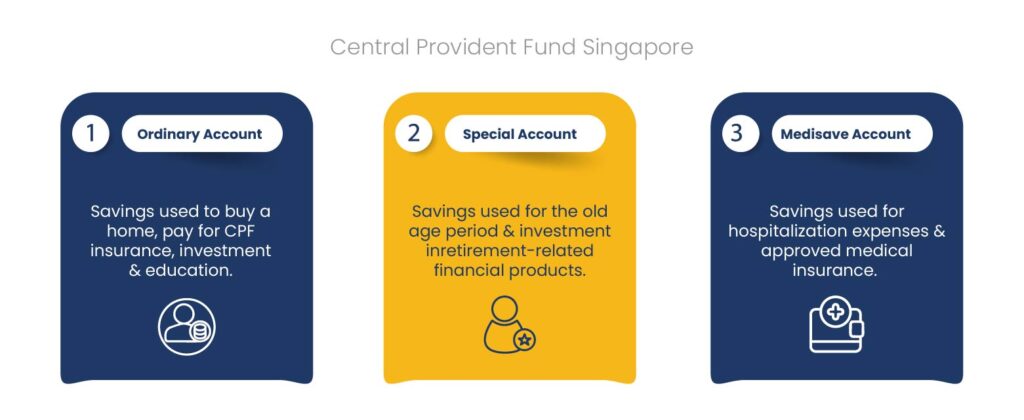The Central Provident Fund (CPF) is a cornerstone of Singapore’s social security system. It is not just a savings plan for employees but also a mandatory obligation for employers. Through CPF, workers in Singapore build financial security for retirement, healthcare, and housing, while employers play a direct role in safeguarding their employees’ future. Yet, there are many business owners and HR professionals who find the CPF rules a complex concept to understand. This can be realtive to a few reasons: the contribution rates may vary by factors like age, the coverage depends on citizenship, and deadlines must be strictly observed. To help employers navigate these requirements, this guide addresses the five most frequently asked questions about the Central Provident Fund Singapore.
1. What Is The Central Provident Fund Singapore?
Definition of CPF
CPF is a compulsory savings scheme that channels both employer and employee contributions into accounts. It aims to serve the long-term needs and demands. Working Singaporeans and their employers make monthly contributions to the CPF and these contributions go into three accounts:

Together, these contributions ensure that individuals are ready for all forms of key life expenses.
Why Employers Must Contribute
Employers are legally required to make CPF contributions for eligible employees. Beyond compliance, CPF contributions demonstrate a company’s commitment to employee welfare. It reassures the working staff that their employer is thoughtful of their future expenses, helping to strengthen trust and boost the employee retention rate.
2. Which Employees Must Be Covered Under the Central Provident Fund Singapore?
Singapore Citizens & PRs
CPF contributions are mandatory for all Singapore Citizens and Permanent Residents (PRs) who are employed in Singapore. This applies whether the role is full-time, part-time, or contractual, as long as the salary conditions are met.
Foreign Employees
Non-residents and foreign workers who hold Employment Passes or Work Permits do not fall under CPF coverage. Instead of committing to CPF, their financial security plans are managed in alternative schemes such as the Skills Development Levy (SDL) or employer-provided benefits.
Age & Wage Eligibility
Employees must earn more than $50 a month to qualify for CPF. The contribution rate is comparatively higher for younger employees, and it gradually decreases with age. Employers must also be mindful of transitional contribution rates for PRs during their first two years of residency.
3. How Much Do Employers Contribute to the Central Provident Fund Singapore?
Contribution Rates By Age Group
CPF rates are in the structure that adheres strictly to age bands. Employees who are younger and under the age of 55 will receive the highest percentage of contributions. Older workers see reduced rates to balance take-home pay with savings.
Employer Vs Employee Share
Contributions are split between the employer and the employee. For example, for employees below 55, the combined rate can be as high as 37% of wages, with the employer shouldering a significant portion.
Example Breakdown
For a worker earning $3,000 a month, CPF contributions might total $1,110 (employer share: $600, employee share: $510). This allocation split across OA, SA, and MediSave, ensuring coverage for multiple financial needs.
3. When And How Should CPF Contributions Be Made?
Payment Deadlines
Employers must submit CPF contributions by the 14th of the following month. If these dates are missed, it can lead to payment of higher financial penalties.
Modes of Payment
CPF contributions are submitted through the CPF e-Submission system, an online portal that integrates with payroll software. With this digital method, it saves more time by streamlining the reporting formats and reducing manual errors.
Penalties for Late Payment
Failure to pay on time demands interest at 1.5% per month, subject to a minimum charge. Repeated delays may lead to legal action, including prosecution.
4. What Can CPF Contributions Be Used For?
Retirement Savings
CPF accounts form the backbone of retirement planning. By saving the funds in the Ordinary, Special, and Retirement Accounts, it offers a solid source of reliable income. This allows one to spend them when they are in their old age.
Housing Payments
CPF Ordinary Account savings can be used to pay for HDB flats, service housing loans, and finance property-related expenses. This has made homeownership more attainable for Singaporeans.
Healthcare Needs
MediSave ensures that employees can pay for any type of hospitalisation, insurance premiums, and certain outpatient treatments. All these can be taken care of without the struggle to manage their finances.
5. What Employers Risk by Missing CPF Contributions in Singapore
Legal Consequences
Employers who fail to contribute to CPF face heavy fines and even imprisonment. The penalty forms can include recovery of the unpaid amount, late payment interest, and additional charges.
Business Impact
Non-compliance can tarnish a company’s reputation, leading to loss of trust among employees and damage to employer branding. In some cases, it may even affect eligibility for government grants and contracts.
Best Practices
The simplest way to avoid errors is by automating payroll. A reliable system calculates CPF accurately, generates e-submissions, and alerts employers before deadlines. This tends to minimize the risk of any form of costly mistakes.
Conclusion
The Central Provident Fund Singapore plays a key role in being more than a legal requirement. It is a commitment to supporting employees’ financial well-being. Employers who understand their obligations and comply consistently not only avoid penalties but also foster a stronger, more engaged workforce.
To stay compliant with confidence, businesses should regularly review payroll processes and consider using automated payroll software. By doing so, they can ensure accuracy, meet deadlines, and focus on growing their business while protecting their employees’ future.

